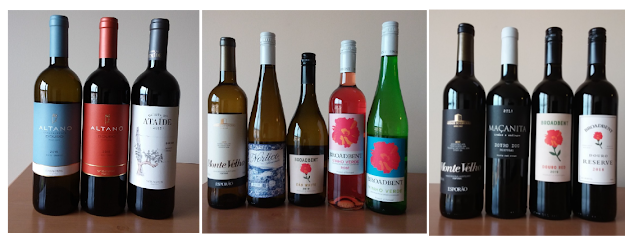Tuesday, January 19, 2021
The Wines of Portugal (non Fortified)
Tuesday, January 5, 2021
WineFunding: Crowdsourcing for wineries
What if you could invest in a winery and not only get your money back but get your return in bottles of wine? Wouldn’t that be wonderful?
For a wine lover like me it is! and I think it’s a great idea to help producers with their expenses, especially for those that are new, or are expanding; and at the same time supplying their investors with bottles of wines and other wine perks from the winery as we may see.
In order to do this, comes a company I recently discovered: WineFunding.
WineFunding is a unique platform, that allows producers who need cash to connect with individuals that have that cash, usually wine fans/lovers who want to invest in wine estates. Before WineFunding existed, most wineries, went to banks to get their loans or had to have a small fortune to be able to own a part of any wine venture.
CEO Maxime Debure had this wonderful business idea and opened his offices in the epicenter of the French wine world: Bordeaux and Burgundy. Together with his team, Maxime examines an average of 450 different wine projects a year, before selecting only the top 25. You can explore all of them on their website. But let me warn you, because this is a French company, most of the wineries at the time of my post, are based in France, though his plan is to extend geographically to fund projects all over the world. I can easily see myself funding a winery in Burgundy for sure or in my home country: Argentina.
WineFunding has created 3 basic models, and depending on your choice you will receive different gains from your “investment”.
Pay back in Wine: this model is from small projects, wineries that are trying to get between 10,000-30,000 Euros. Your contribution can be from 100-1000 Euros, the duration is 1-5 years, in exchange for your funds, the winery agrees to pay you, your investment in wine. Normally it will be the same amount of bottles spread on the duration of your loan. From the point of view of the wine founder, this option is similar to an "en primeur" sale of these wines. (where you buy wines before they are released). Let's say you invest $300 Euros, in 5 years you will receive a case of wine per year until the producer pays you what he/she owes you.
Wine Bond: this is where it gets really interesting and for me is the best offer, the principal is paid in capital (so you will get all your money back) but the interest is paid in wine. This is used for medium sized projects that are trying to get between 30,000-300,000 Euros. The investor’s contribution could be anywhere between 1,000-10,000 Euros, the contract lasts between 2-5 years. The payment of the capital is divided according to the duration of the contract, and is usually returned to the investors in increments of 20 to 25% per year and the interest, usually 8%, is paid fully in cases of wine.
Equity: This is for big projects, since here wineries are looking to raise more money, from 100,000 to 10 million Euros. The contributions could be anywhere from 1000 to 1 million Euros. Here you become a shareholder of the wine estate, so you will own equity. As a shareholder, you will receive dividends and/or capital gains, but also many other perks: special discounts for wine purchases, tastings, and free lodging at the wineries, tax incentives (though these are only available to French nationals), etc.
Interested in becoming a Wine founder? take a look at some of their exciting projects. I was told by Maxime, that in the case of wine founders located in the US, the company works with a series of importers/distributors, to make sure their investors can receive their wines at home, according to US wine regulations. Plus, some of the estates will allow you to taste their wines beforehand (you will be buying a set of wines from them, through their website) and participating in live tastings with your producer/ winemaker, which will help potential investors to learn more about the wine estate/ future investment.
Sounds fun!, isn't it? Cheers! Silvina.
#winefunding #crowdsourcing #winebusiness #winepartners
Remember to subscribe to keep receiving Thoughts of La Wina in your inbox and to follow me in Instagram @Silvinalawina and Linkedin.



